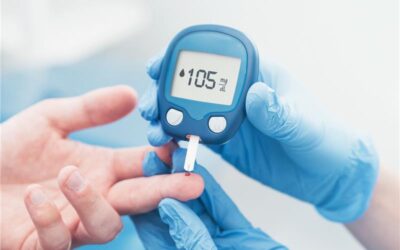Case Study
Understanding VLCAD Deficiency
This study demonstrates that untargeted metabolomics data from plasma can distinguish patients with a normal physiologic response to fasting versus patients with VLCAD deficiency, Specifically, the generalized elevation of acylcarnitines observed in physiologic fasting is distinguishable from the more localized and dramatic increase in C14:1 and longer chain length acylcarnitine species in VLCAD deficiency.
This study demonstrates that untargeted metabolomics data from plasma can distinguish patients with a normal physiologic response to fasting versus patients with VLCAD deficiency, Specifically, the generalized elevation of acylcarnitines observed in physiologic fasting is distinguishable from the more localized and dramatic increase in C14:1 and longer chain length acylcarnitine species in VLCAD deficiency.

The Challenge: Better Diagnosis for Patients with VLCAD Deficiency
Very long-chain acyl-CoA dehydrogenase (VLCAD) deficiency is a rare genetic disease that prevents the body from properly converting long-chain fatty acids into energy. The phenotype associated with VLCAD deficiency is very heterogeneous. Mild symptoms may include low blood sugar, poor appetite, lack of energy, and muscle weakness in early childhood. In severe cases, VLCAD may present with neonatal cardiomyopathy, hypoglycemia, hepatic dysfunction, multiorgan failure, and death. High levels of C14:1 acylcarnitine in dried blood spots (DBS) are typically the primary analyte for newborn screening (NBS) of VLCAD deficiency. However, there are still limitations in confirming abnormal NBS by biochemical testing alone. More advanced molecular testing has been recommended as second-tier testing before diagnosing a patient with an abnormal NBS for VLCAD deficiency. A challenge that limits NBS to detect VLCAD deficiency is that increases in plasma acylcarnitine levels have also been observed in fasted individuals. Metabolomics could help distinguish fasted patients without VLCAD deficiency from patients with VLCAD deficiency.
Metabolon Insight: Deciphering Metabolic Differences Between Fasted Individuals and Patients with VLCAD Deficiency
This study utilized the Metabolon Global Discovery Panel to profile the plasma of one patient with VLCAD deficiency and two individuals after a 24-hour fast.1 Metabolon Global Discovery Panel‘s unrivaled coverage of up to 5,400 semi-quantifiable metabolites offered this group the most comprehensive solution for characterizing the metabolic differences between fasting individuals and patients with VLCAD deficiency.
The Solution: Metabolomics Reveals Differences in Lipid Metabolism
In this study, to determine whether C14:1 and C14:2 elevations that result from fasting can be distinguished from C14:1 and C14:2 elevations that result from VLCAD deficiency, the research group compared plasma acylcarnitine profiles and metabolomics data from two fasted subjects versus an individual with VLCAD deficiency. Targeted metabolomics of plasma acylcarnitines demonstrated that patients with VLCAD deficiency have significantly greater ratios of C14:1/C12:1 compared to fasted patients.
Analysis of the untargeted metabolomics data revealed numerous differences in lipid metabolism between the two groups but similar glucose levels. Fasted individuals had high levels of multiple free and dicarboxylic fatty acids, whereas only the monosaturated fatty acid, myristoleate (C14:1), was significantly elevated in the patient with VLCAD deficiency. Long-chain acyl-carnitine conjugates were elevated in all patients, but the elevation was more striking in the patient with VLCAD deficiency. In contrast, the ketone bodies, 3-hydroxybutyrate and acetoacetate, were much more highly elevated in fasting individuals than in patients with VLCAD deficiency.
The Outcome: Metabolomics May Improve Diagnoses of VLCAD Deficiency
When presented with a patient with elevated C14:1 (acylcarnitine) in plasma, this study suggests that C14:1/C12:1 may be a valuable indicator to distinguish physiologic elevations of C14:1 from fasting versus VLCAD deficiency. This study also shows that untargeted metabolomics data in plasma can distinguish patients with a normal physiologic response to fasting versus patients with VLCAD deficiency.
References
1. Burrage LC, Miller MJ, Wong LJ, et al. Elevations of C14:1 and C14:2 Plasma Acylcarnitines in Fasted Children: A Diagnostic Dilemma. J Pediatr. Feb 2016;169:208-13.e2. doi:10.1016/j.jpeds.2015.10.045






